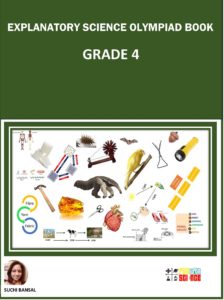MOTION
Home » MOTION

Subscribe to our Newsletter
MOTION
A body is said to be in motion if its position changes with time with respect to an observer (or a reference point). The passengers sitting in a moving bus are said to be in motion with respect to an observer standing outside the bus, Similarly, the blades of a rotating fan, the hands of a working wall clock, a spinning top and satellites are all in motion with respect to a fixed axis.
Motion:
The change in position of an object with change in time is called motion.
Rest and motion are relative terms. A body may seem to be at rest with respect to one object, but may appear to be in motion with respect to another object. If you consider a passenger in a moving train, he is at rest with respect to his co-passengers, but is in motion with respect to an observer standing on the ground.
MOTION ACCORDING TO STATE OF MOTION
UNIFORM MOTION:
Motion is said to be Uniform if it covers equal distance in equal interval of time.
Here,
At Point A, Displacement is 0.5 units in 2 seconds,
At Point B, Displacement is 0.5 units in 2 seconds
At Point C, again Displacement is 0.5 units in 2 seconds, So it’s a Uniform Motion.
NON-UNIFORM MOTION:
If a body travels unequal distance in equal interval of time, then it is called Non-Uniform Motion.
Here the Displacement done is not equal in equal times.
Distance-Time graph for Body at rest
TYPES OF MOTION
1. TRANSLATORY MOTION
Translatory motion or translational motion occurs when all points in a body move the same distance in the same amount of time.
Whenever a body is shifted or moved from one point to another point, then the body said to be experienced translational motion. As in this case, all points of a moving body move uniformly in the same line or direction.
The translatory motion does not always require that the object move in a straight
line.
Example:
· A train moving in its track,
· A man walking on the road,
· Birds flying in the sky.
RECTILINEAR/LINEAR MOTION:
When the motion is in a straight line, it is called linear motion. Rectilinear motion is
a type of translatory motion.
Example:
· A car moving on a straight road.
· A train moving on a straight track
· A stone falling from a height.
· March of an Army.
· Elevator moving up and down.
CURVILINEAR MOTION:
When the motion is on a curved path, it is called curvilinear motion. This scenario is viable if an object moves in a curved path without changing its orientation.
Example:
· A car moving on a bend.
· A stone thrown in the air at an angle.
· Curved Path of a swing
2. CIRCULAR MOTION:
When the motion is on a circular path, it is called circular motion.
EXAMPLE:
The motion of the earth in its orbit.
The object maintains a fixed distance from a fixed point.
3. ROTATIONAL MOTION:
When an object moved around an axis, it is called rotation, e.g. rotation of the earth
on its axis. The center of mass will remain at its place and the whole body moves about the center of mass. Like a top spinning on its axis.
Examples: Rotating blades of a fan, a child sitting on a merry-go-round, the tips of the hands of a clock.
4. PERIODIC MOTION:
When the motion is repeated after a fixed interval, it is called periodic motion. Periodic motions are abundant in nature.
Examples:
· Change of season
· Day & Night formation
· Heart Beat
· The motion of the bob of the simple pendulum
· Motion of a planet around the sun
· Motion of the tip of the minute and hour hands of a clock
· Motion of a boy sitting in a swing
· Motion of the needle of a sewing machine operating at constant speed
· Sunrise.
· Sunset
· Rotation & Revolution of earth
· Beating of drum
· Pendulum clock
Periodic motions can be classified into two main categories.
1. Natural periodic motions:
· which occur in nature without any external force;
2. Artificial or man-made periodic motions.
· These motions are forced periodic motions such as diesel engines.
5. NON-PERIODIC MOTION:
Non-periodic changes are the changes that do not repeat themselves after a fixed interval of time.
Example:
· Tornado, Volcanic eruption, Tsunami, Forest Fires (most of the natural disasters).
· Swaying of the branches of a tree
· Motion of a bouncing ball under the action of gravity and friction
· The running of a batsman between the wickets
· Motion of the pestle in a mortar when operated manually.
· Movement of our hand while writing
· Movement of legs while dancing and walking
· Waving hand Are non-periodic motion
6. OSCILLATING MOTION
Swinging from side to side, like a pendulum in a clock.
Oscillatory motions are a type of periodic motion.
A pendulum is a good example for an oscillatory motion. In the simple pendulum, the bob oscillates to and fro over the middle equilibrium point.
FACTORS THAT AFFECT TIME PERIOD
The period of such a device can be made longer by increasing its length, as measured from the point of suspension to the middle of the bob.
A change in the mass of the bob, however, does not affect the period, provided the length is not thereby affected.
The period, on the other hand, is influenced by the position of the pendulum in relation to Earth. Because the strength of Earth’s gravitational field is not uniform everywhere, a given pendulum swings faster, and thus has a shorter period, at low altitudes and at Earth’s poles than it has longer period at high altitudes.
7. RANDOM MOTION
It is known as irregular motion, which means any motion that has no fixed pattern. Bees fly in an irregular motion.
Sometimes an object can display combinations of different types of motion.
For example,
1. A moving car which moves straight on the road. It displays rectilinear motion but at the same time the wheels of the car are moving in circles displaying circular motion. So the wheels of a moving car execute both rectilinear and circular motions.
2. In a sewing machine, the tip of the needle is in rectilinear motion as well as in periodic motion.
3. Birds gliding in the sky have both translational and non-periodic motion.
4. Rotation of the Earth on its axis is a combination of rotational and periodic motion.
BOOKS
We have our e-books published on Amazon for Grade 3 and Grade 4. The books serve as an important guide for Science Olympiads organized by SOF, Silverzone, Unified Council and others. Books are designed to help students understand key science concepts.
The key highlights of the book are:
· Well explained topics
· Use of diagrams and images for
students to visualize
· Test exercise after each chapter for self-assessment and evaluation
· Interesting facts sections spread across the book
Here are the links:





